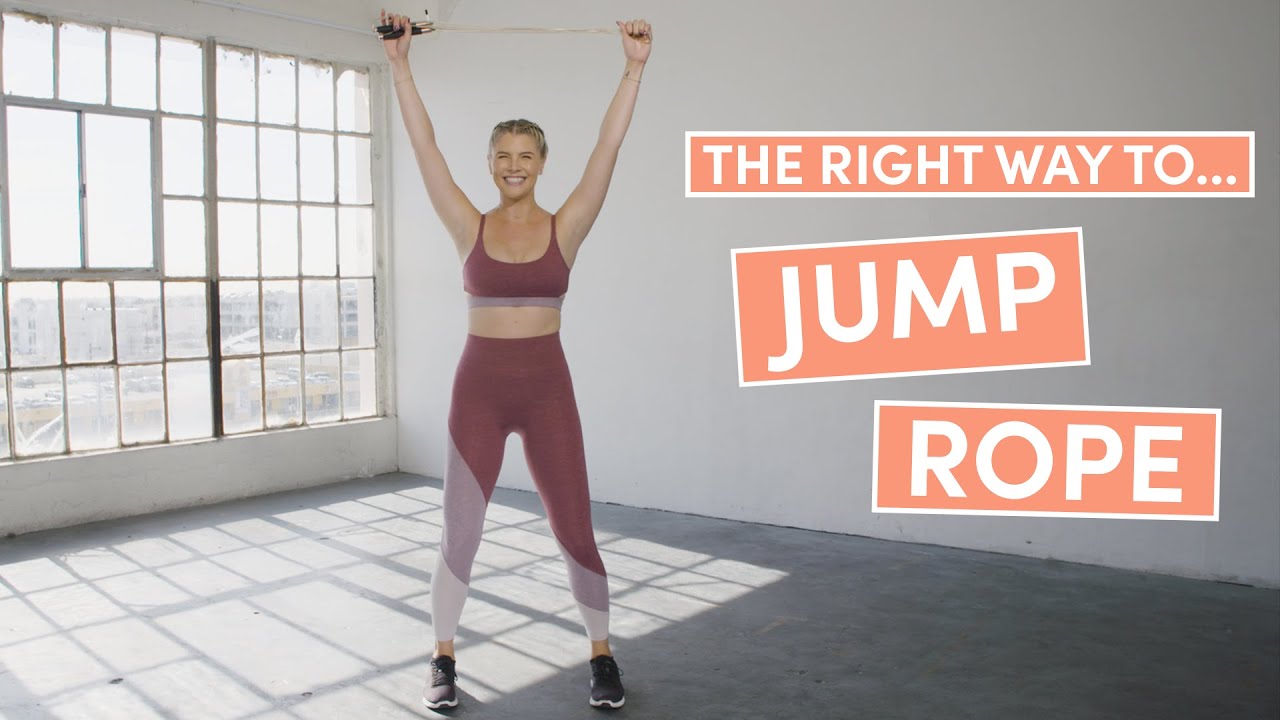Does the term “HIIT” call to mind boot-camp-esque group fitness classes with zealous instructors? HIIT (high-intensity interval training) is a type of cardio workout where you work hard and rest for short periods — it’s over fast. Research suggests it elicits similar effects to other forms of exercise that take longer. To a beginner, it may seem intimidatingly full of high-impact jumping exercises.
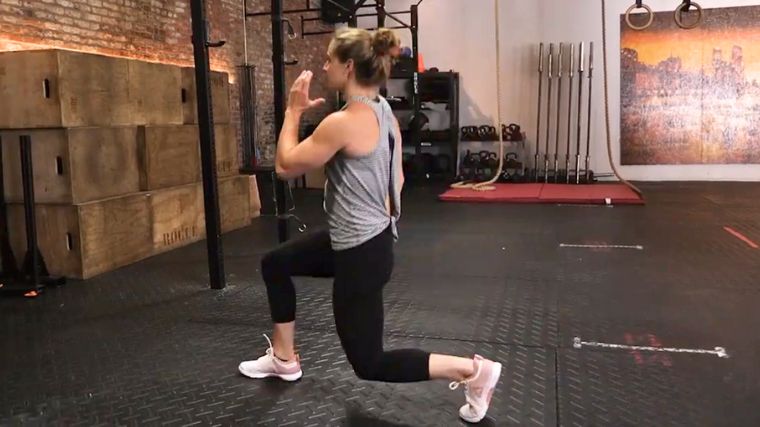
Fear not — I have the best HIIT cardio workout for beginners with low-impact options aplenty. I’ll break down the workout, explain each exercise, and discuss the research-backed benefits and different types of HIIT training. Let’s jump (or step) right in.
The Best HIIT Cardio Workout for Beginners
The first thing to know about HIIT workouts for beginners is that just about anything can become a “HIIT exercise.” It’s all about how you manipulate it. While there’s nothing wrong with HIIT workouts that utilize plyometrics to get your heart rate up, this one has some regular old strength training bodyweight exercises. (Don’t worry: there are jumping options, too.)
A true HIIT workout is characterized by short bouts of all-out effort and short rest periods. Rather than sustaining a moderate heart rate for a longer period, like in a low-intensity steady-state (LISS) cardio workout, you alternate spiking your heart rate for a short amount of time and letting it come back down. You can do as little as a five-minute HIIT workout.
[Read More: The Best Compact Exercise Equipment for Any Small Space]
Rather than performing a lot of reps or adding weight to make it feel like high-intensity exercise, you’ll simply perform each exercise continuously for 30 seconds and then rest for 30 seconds. Performing 30 seconds of quality bodyweight squats while engaging your muscles will raise your heart rate without trying to go faster or add jumps — especially as a beginner.
As a personal trainer, I always emphasize this idea to my beginner clients: Of course, good form matters at all fitness levels, but as you advance, you’re able to move faster or add plyometric exercises while you maintain it. Don’t worry about being “fancy” or advanced: worry about what’s right for your body right now.
The Workout
Before jumping in, start with a complete dynamic warm-up. This is a full-body HIIT workout, so you want all your muscles (and heart) to be nice and warm. Afterward, finish with a cool-down of three to five minutes of light cardio, like walking or cycling, and do static or dynamic stretches.
The workout starts with a jump rope (though I’ll give you non-jumping, low-impact alternatives) to give you an idea of how your heart should be working. You’ll do 20 seconds of jump rope, rest for 40 seconds, and repeat for three rounds to ease into the HIIT-style of timed work.
[Read More: The Best Mobility Exercises From a Physical Therapist (+ Tips)]
Next, you’ll move into a four-exercise circuit of bodyweight exercises. You’ll perform each one for 30 seconds, rest for 30 seconds, and move on to the next. You’ll repeat the circuit for three rounds. You can add up to one minute of rest between rounds. Then, you’ll finish with three rounds of burpees — or an alternative.
Depending on whether you add extra rest between rounds, this 16- to 20-minute HIIT workout is suitable for beginners. The intention is to get you used to the feeling of starting and stopping to improve heart rate recovery. Besides a jump rope, this is a bodyweight workout — so no other equipment is needed.
- Jump Rope Warm-Up: 3 x 20 seconds on, 40 seconds off
Perform three rounds of the following four exercises in succession as a circuit*:
- Bodyweight Squat: 30 seconds on, 30 seconds off
- Push-Up: 30 seconds on, 30 seconds off
- Alternating Reverse Lunge: 30 seconds on, 30 seconds off
- Mountain Climber: 30 seconds on, 30 seconds off
- Burpee Finisher: 3 x 30 seconds on, 30 seconds off
*Add a one-minute rest in between rounds if necessary.
Coach’s Tip: Focus on your form in each exercise and create muscular tension in the eccentric (lowering) portion of the moves. If that starts to feel too easy, try picking up the pace in your next HIIT session.
How Often to Do This Workout: Try this workout twice a week, giving yourself plenty of recovery time in between.
Modifications
I’ll give you more customization options for each exercise in the next section, but here’s how to modify the workout as a whole.
- Make it Easier:
- You can rest longer than 30 seconds if you need to.
- You can rest for up to a full minute (or more) between rounds.
- You can start with just one round on your first try, do two rounds the next time, and go for the entire three on your third HIIT session.
- Make it Harder:
- Perform three rounds in succession without extra rest (just don’t skip any of your 30-second rest periods).
- Add a fourth round.
- Try to do the exercises quicker while maintaining good form.
Jump Rope
[Read More: The Most Effective Workout Splits, Created by Our Experts]
Even though I said you don’t have to jump to do HIIT, this method is a great way to kick off a HIIT workout. You’ll work on your coordination and agility while doing some light jumping. It will raise your heart rate quickly, while the later exercises may raise it more gradually.
How to Do It:
- Stand upright in front of a jump rope, holding a handle in each hand.
- Swing the jump rope over your head and jump over it when it reaches your feet. Jump with both feet or “skip” with one foot at a time. Try to take a small jump and land lightly.
- Continue swinging the jump rope forward and hopping over it when it reaches the floor. Make sure the movement is coming from your wrists. Keep your shoulders relaxed.
Modifications
- Make it Easier:
- Try jumping jacks instead — they’re less complicated to coordinate and a full-body warm-up that increases your heart rate.
- For a low-impact option, try high knees. Just step each foot down rather than jogging in place.
- Make it Harder:
- Do two jumps before the rope comes back down.
- Try double-unders, where you swing it around twice before your feet land.
- Use a weighted jump rope.
Bodyweight Squat
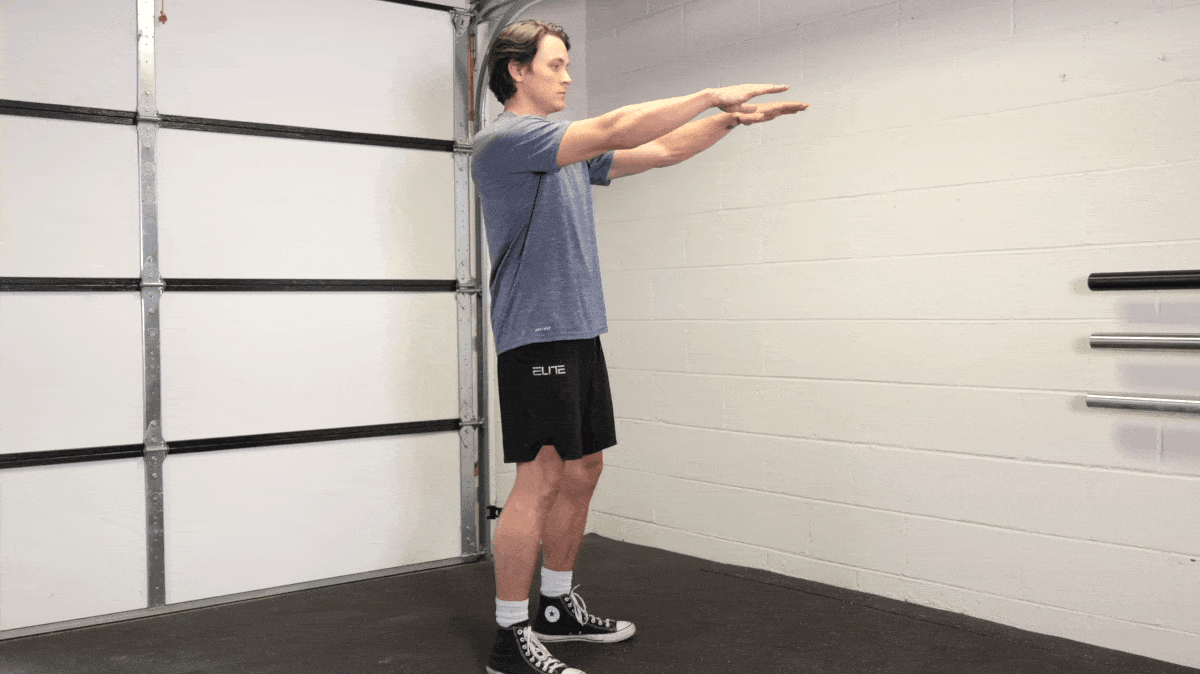
[Read More: The Best Glute Workout Exercises, With Tips From Our Experts]
Bodyweight squats are a compound exercise that work multiple muscle groups to strengthen your lower body. Compound movements raise your heart rate quickly, so even if you don’t move as fast as possible, they work well in a HIIT session.
How to Do It:
- Stand upright with your feet about hip-width apart.
- Inhale and sit your glutes down while keeping your core engaged and chest up. Let your knees come forward slightly. Go to parallel or deeper if you can control it.
- Exhale and push the floor away through your feet to stand back up. Tuck your hips and squeeze your glutes at the top.
- Continue for 30 seconds.
Modifications
- Make it Easier:
- Perform bridges on the floor. Add a mini resistance band above your knees to make bridges more challenging.
- Try box squats so you have feedback on how far down to sit. You can pause on the box before standing back up.
- You can also elevate your heels on a pair of small weight plates if keeping them down is difficult.
- Make it Harder:
- Add a dumbbell or kettlebell for goblet squats to make squats harder but low-impact.
- If you’re open to jumping — try TRX-assisted jump squats, unassisted jump squats, or box jumps to a low box.
Push-Up
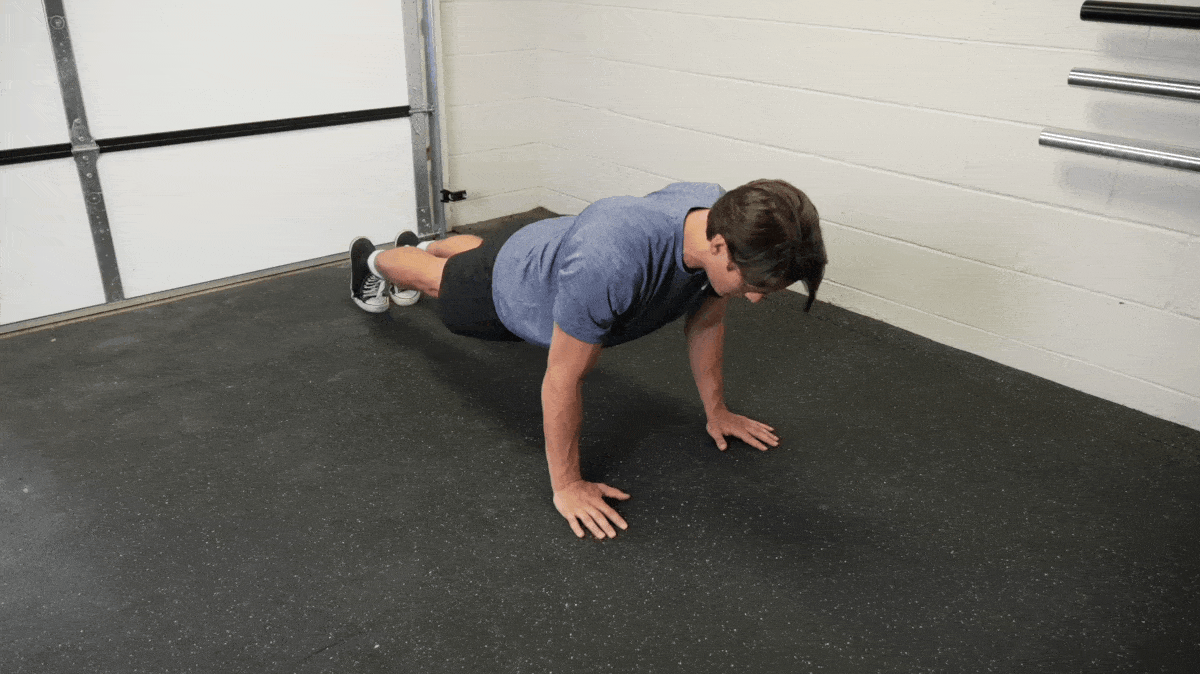
Push-ups are a classic bodyweight exercise. They strengthen your upper body while engaging your core to stabilize your spine. There are many ways to modify them to make them accessible. They require a lot of effort to nail the form, which makes them ideal for spiking your heart rate in a HIIT workout.
How to Do It:
- Begin in a plank position. Engage your core and glutes, retract your head, and push back into your heels.
- Inhale and lower your body to the floor, maintaining tension to keep your spine neutral. Keep your elbows in close to your body.
- Exhale to push the floor away, pushing back up to your plank position.
- Continue for 30 seconds. Lower slowly and push up with force.
Modifications
- Make it Easier:
- Elevate your hands on a tall box or bar on a Smith machine.
- Perform kneeling push-ups by starting in your plank position, keeping everything the same, and lowering your knees to the floor.
- Do eccentric push-ups — lower yourself with control and get back up to re-set into your plank. This can be both harder and easier. You’ll teach yourself control (harder) while not having to be able to push yourself back up yet (easier).
- Perform shallow push-ups with a yoga block under your chest. Lower to the block’s tallest height and push back up.
- Simply hold a plank for 30 seconds. Try it with straight arms or on your forearms.
- Make it Harder:
- You can elevate your feet slightly for a deeper push-up.
- You can do them much more slowly or even try 1 ½ rep push-ups.
- Do a close-grip push-up for more triceps work.
- Try an advanced plyometric push-up variation where you explode up and clap before returning to your plank position.
Alternating Reverse Lunge
[Read More: Best Dumbbell Exercises for Muscle Gain, Plus 3 Workouts]
Alternating reverse lunges are unilateral exercises targeting one leg at a time. Continually alternating sides will keep your heart rate up. You’ll also challenge your balance and stability. They’re a great place to start if you want to progress to a plyometric option in a more advanced HIIT workout.
How to Do It:
- Stand upright with your feet wider than hip-width apart.
- Inhale and step your right foot back behind you with the ball of the foot on the floor and your heel lifted. Bend both knees until your back knee touches the floor.
- Exhale and straighten both legs. Step your back foot forward to return to the starting position.
- Repeat on the other side. Continue alternating sides for 30 seconds.
Modifications
- Make it Easier:
- Hold onto a wall or sturdy object to help you balance.
- Reduce the depth of the back knee bend — you don’t have to go all the way to the floor.
- Alternatively, try step-ups to a low step or box.
- Make it Harder:
- You can hold a dumbbell or kettlebell in each hand.
- Try forward lunges or walking lunges.
- Try jumping lunges for an advanced option.
Mountain Climber
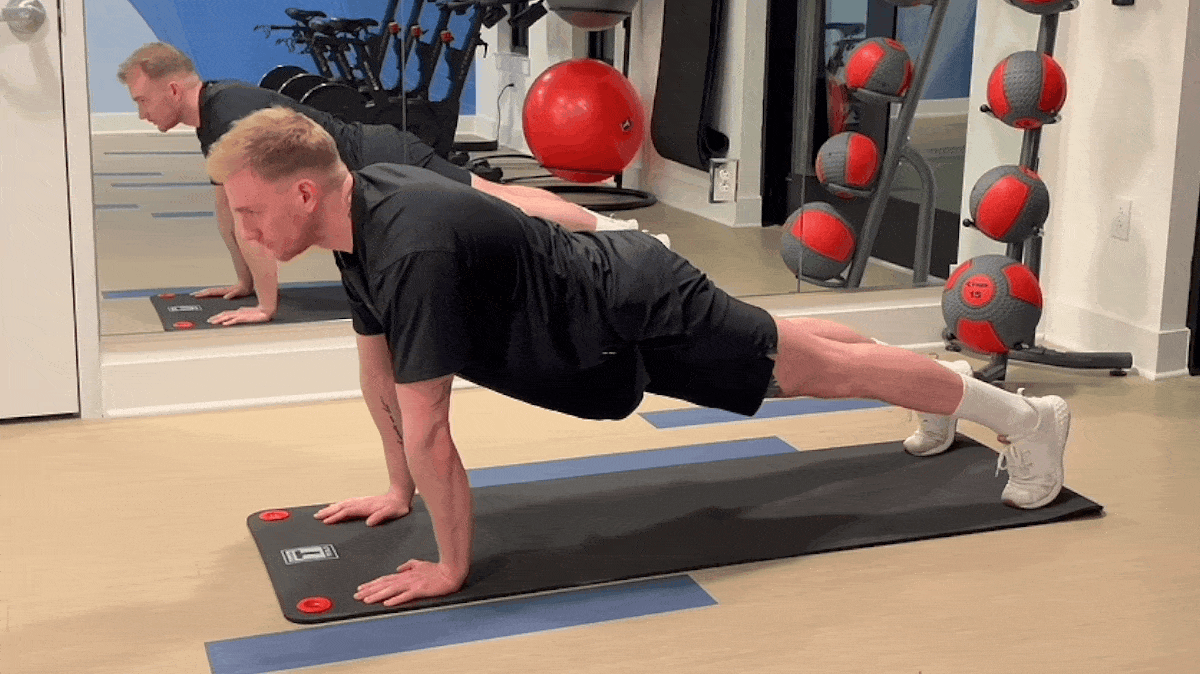
[Read More: The Best Quad Exercises for Muscle Growth and Strength]
Mountain climbers are a great core exercise that challenges your upper and lower body to stabilize your spine and resist rotation. The rapid movement of your knees raises your heart rate, making them a popular bodyweight exercise in HIIT workouts.
How to Do It:
- Begin in a plank position with your hands under your shoulders. Engage your abs to stabilize your spine. Push back into your heels.
- Bring your right knee towards your chest. Step your right foot back to plank position. Bring your left knee towards your chest. Step your left foot back to plank position.
- An alternative option is to bring your right knee to your left triceps, step back, and then bring your left knee to your right triceps, and step back. Cross-body mountain climbers target your obliques.
- Continue for 30 seconds, adjusting your pace to your fitness level.
Modifications
- Make it Easier:
- Hold a plank for 30 seconds.
- If you did a plank as a push-up alternative, perform the dead bug exercise. Dead bugs offer a similar movement pattern with your legs, but you lie on your back without doing the extra work of supporting your body weight with your arms.
- Do standing high knees if you didn’t already in your warm-up.
- Do same-side mountain climbers.
- Take them slowly. Bring one knee forward and step back, fully returning to your plank position before moving the other knee.
- Make it Harder:
- Cross-body mountain climbers will be more challenging than same-side.
- Pick up the pace to a “jog,” hopping from one foot to the other. Keep your core tight.
- Try advanced spider push-ups. Bring one knee to your triceps, hold it there, perform a push-up, and return your foot to plank position.
Burpee
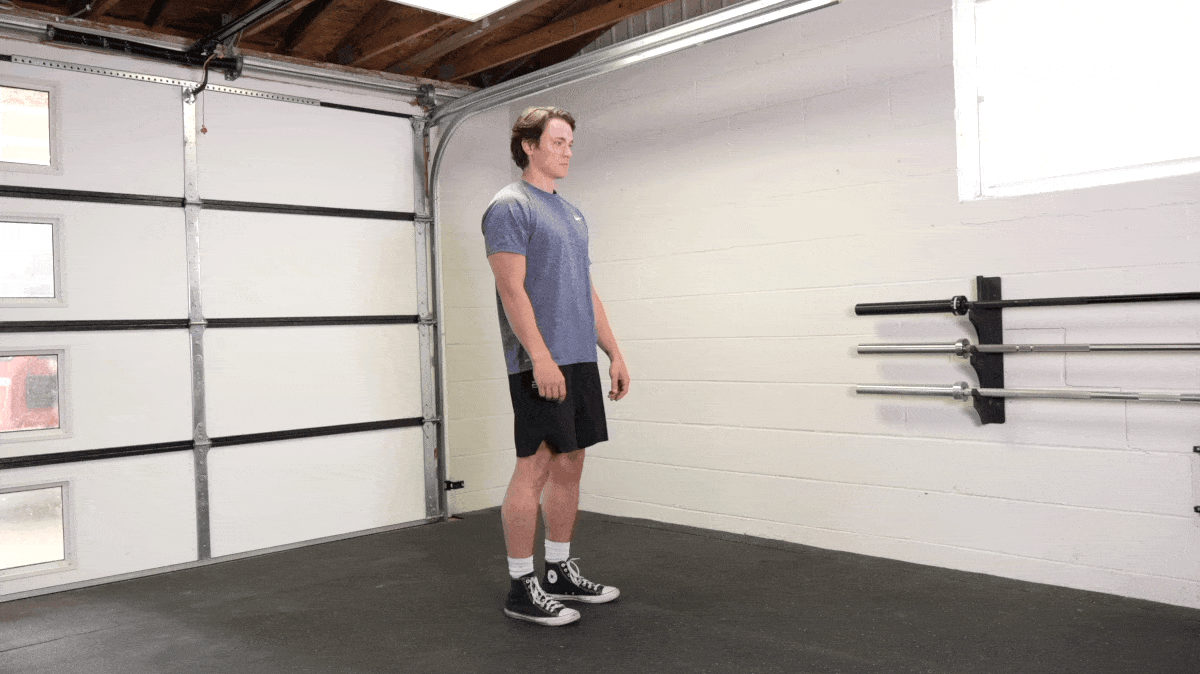
[Read More: The Best Upper Body Exercises and Workout Routines]
Burpees are a staple in HIIT for a reason. They’re a full-body exercise combining push-ups and jump squats, raising your heart rate immediately. Even if you take them slowly, they’re challenging and sure to tax your entire system — that’s why I save them for last. You’ll give it your all and then get to rest.
How to Do It:
- Stand upright with your feet hip distance apart.
- Squat down and place your hands on the floor. Jump your feet back to plank position.
- Lower into a push-up. As you push back up, jump your feet up to your hands, returning to your deep squat-like position.
- Explode up from your squat into a jump, reaching your arms up by your ears. Squat back down and repeat.
Modifications
- Make it Easier:
- Stand upright. Bend forward and place your hands on the floor. Step each foot back into a plank position. Then, step each foot back forward and stand. In other words, no jumps and no push-ups.
- Perform it with the push-up, but take out the jumps.
- Perform a plank walkout instead.
- Make it Harder:
- Perform the full burpee.
- Pick up the pace.
- Do two push-ups per burpee.
Benefits of HIIT Cardio Workouts
HIIT may be trendy, but research backs up a lot of its health benefits. The American College of Sports Medicine (ACSM) states that HIIT offers the following benefits: (1)
- Boosts anaerobic and aerobic fitness
- Lowers blood pressure
- Increases fat oxidation
- Improves insulin sensitivity
- Boosts post-exercise metabolic rate
- Helps with weight loss
- Helps people adhere to an exercise program
Let’s break a few of these down.
Time-Saving and Effective
You can get an effective HIIT workout done in a short time — just five to 20 minutes. A lot of research states that people may be more likely to exercise when it can be done quickly, as being short on time is a commonly reported obstacle. (2)
Research also shows that short HIIT sessions elicit similar physiological responses to longer, moderate-intensity steady-state sessions — making it an excellent option for home workouts for busy people. (3)
Improves Cardiovascular Health, Fitness, and Performance
Regularly performing aerobic exercise is well-known to improve your cardiovascular health. Studies show that HIIT and steady-state cardio can decrease your blood pressure, prevent cardiovascular diseases, and increase VO2 max — a common indicator of cardiovascular health. (4)
Performing HIIT can increase your aerobic and anaerobic exercise capacity, maximum oxygen uptake, and overall endurance. Improving these markers by doing HIIT cardio workouts can also carry over to your exercise performance in other types of training. (2)
Incorporates Strength Training
HIIT cardio workouts are not about building muscle, but doing HIIT that incorporates strength training exercises works and engages your muscles, even if you are focusing on your cardiovascular system.
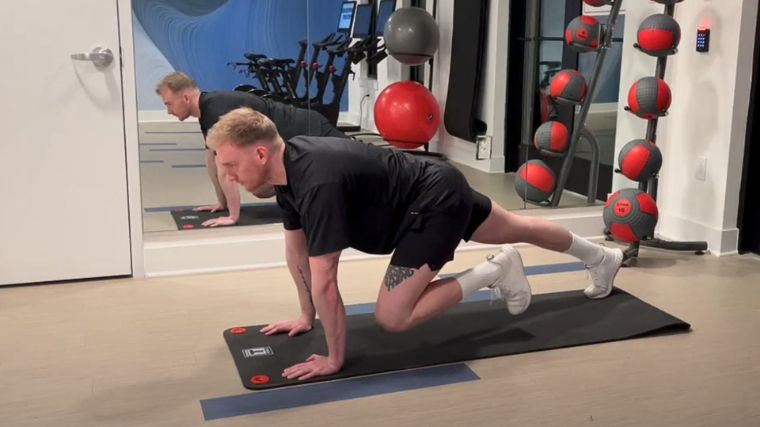
Due to this combination, research shows that HIIT can draw physiological responses to resistance training. The short patterns of high-intensity exercise followed by low-intensity exercise or rest periods are similar to a resistance or strength training session, even though the volume is lower. (2)(5)
Aids Fat Loss
If your goal is weight loss, you’ll need to take in less energy than you expend. Nutrition is key, but HIIT can help you lose body fat by increasing the amount of calories you burn quickly. Burning more calories can boost your total daily energy expenditure (TDEE).
Since HIIT works your anaerobic system, it also stimulates EPOC (excess post-exercise oxygen consumption), which causes your body to keep your metabolic rate elevated and continue burning calories at a slightly higher rate after your workout. (6)
Types of HIIT Cardio
There are many ways to make a HIIT cardio workout. Here are a few different types and some terms you may see.
Bodyweight Workout
This workout is a bodyweight workout. You can do a HIIT cardio workout with no equipment, only your body weight. More advanced bodyweight HIIT workouts incorporate plyometrics or more advanced variations to keep the intensity extra high.
Resistance Training With Equipment
In HIIT cardio workouts that incorporate strength training exercises, you can add weight equipment for more resistance. Dumbbells, kettlebells, or even barbells (think CrossFit) can up the intensity.
Cardio Machines
You can also do HIIT cardio workouts on cardio machines. You can do a burst of all-out effort, like a sprint, followed by a short rest period or low-intensity exercise on a treadmill, elliptical, stationary bike, rowing machine, stair climber, ski erg, or vertical climber.
HIIT Styles
There are a few styles of HIIT that dictate the time and intensity of your intervals.
- Tabata training involves 20 seconds of maximum effort and 10 seconds of rest for eight rounds or four minutes.
- Fartlek training is common in running to vary pace and intensity.
- Sprint interval training (SIT) requires more intensity than HIIT, and the work periods may be even shorter and more intense.
- EMOM training means every minute, on the minute. You perform a certain number of reps at the top of each minute and rest for the remainder of the minute. Then, you repeat this for your desired number of minutes.
- AMRAP means as many rounds as possible. You’ll get a set time and list of exercises, and try to complete as many rounds as you can before the timer runs out.
- Circuit training is a series of exercises performed in succession, like in my workout.
- Pyramid training amps up the intensity and gradually reduces it.
Frequently Asked Questions
Here are the questions I get about these kinds of workouts most often.
What is the best HIIT cardio workout?
The best HIIT cardio workout is one that you enjoy and can stick with. It should also be suited to your current fitness level.
Is 20 minutes of HIIT per day enough?
Yes, but you don’t (and often shouldn’t, for the sake of recovery) do it every day. Try it two or three times a week.
How long should a HIIT cardio workout be?
A HIIT workout should be an average of 15 minutes. You can do one as short as five minutes or up to 20.
How do you do HIIT cardio at home?
You can easily do HIIT cardio at home by combining bodyweight exercises and performing them for short bursts of effort followed by short rest periods.
References
- Roy, Brad A. Ph.D., FACSM, FACHE. High-Intensity Interval Training: Efficient, Effective, and a Fun Way to Exercise. ACSM’s Health & Fitness Journal 17(3):p 3, May/June 2013.
- Atakan MM, Li Y, Koşar ŞN, Turnagöl HH, Yan X. Evidence-Based Effects of High-Intensity Interval Training on Exercise Capacity and Health: A Review with Historical Perspective. Int J Environ Res Public Health. 2021 Jul 5;18(13):7201.
- Foster C, Farland CV, Guidotti F, Harbin M, Roberts B, Schuette J, Tuuri A, Doberstein ST, Porcari JP. The Effects of High Intensity Interval Training vs Steady State Training on Aerobic and Anaerobic Capacity. J Sports Sci Med. 2015 Nov 24;14(4):747-55.
- Skutnik BC, Smith JR, Johnson AM, Kurti SP, Harms CA. The Effect of Low Volume Interval Training on Resting Blood Pressure in Pre-hypertensive Subjects: A Preliminary Study. Phys Sportsmed. 2016;44(2):177-83.
- Burgomaster KA, Howarth KR, Phillips SM, Rakobowchuk M, Macdonald MJ, McGee SL, Gibala MJ. Similar metabolic adaptations during exercise after low volume sprint interval and traditional endurance training in humans. J Physiol. 2008 Jan 1;586(1):151-60.
- ACE Fitness. 7 Things to Know About Excess Post-exercise Oxygen Consumption (EPOC). American Council on Exercise.
The post The Best HIIT Cardio Workout for Beginners (+ Customizations for Every Fitness Level) appeared first on BarBend.

